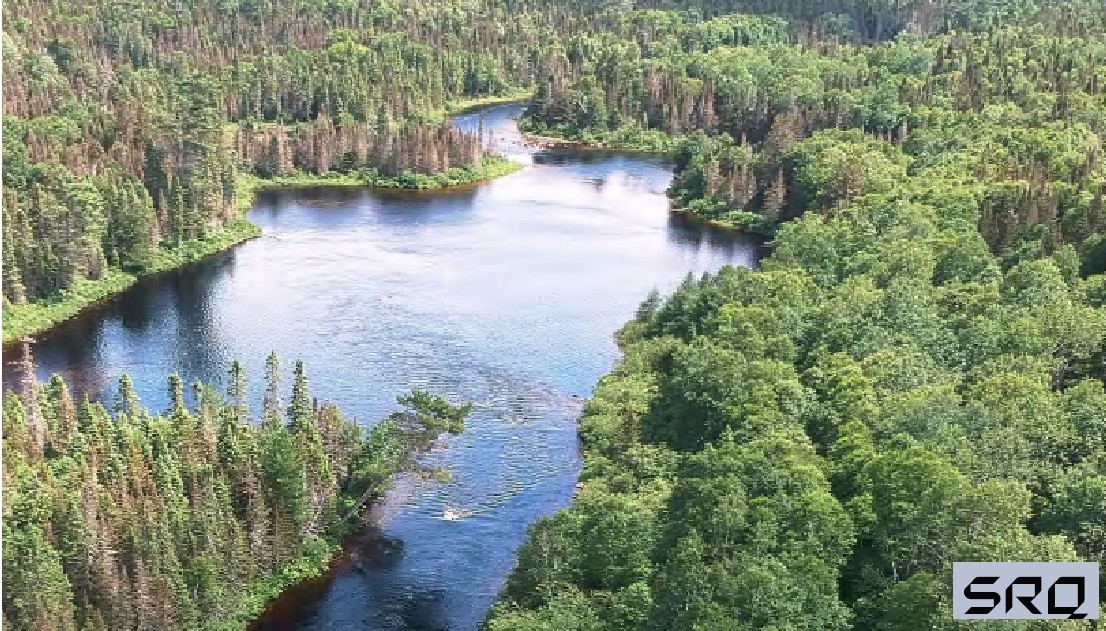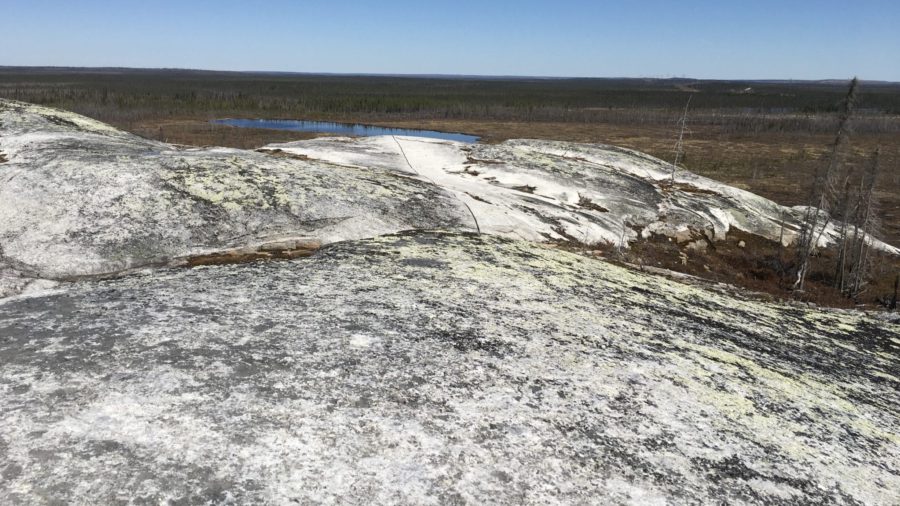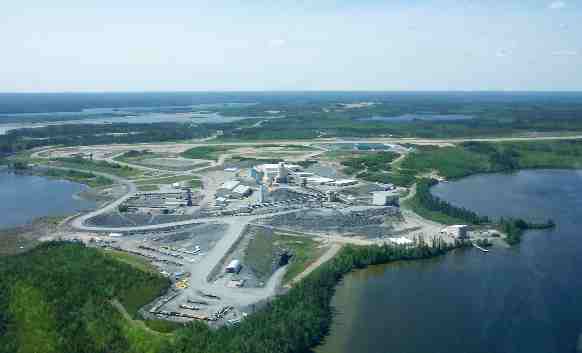What in store for BC miners with a new NDP government

B.C. Premier John Horgan and his new cabinet are sworn in on July 18, 2017.
British Columbia’s mining industry faces an uncertain future following the election in July of an NDP government whose very survival depends upon three electoral seats held by the BC Green Party lead by University of Victoria climate scientist, Andrew Weaver.
In addition, the industry faces heavy scrutiny from well-funded special interest groups, many of which are aligned with First Nations bands seeking resolution of longstanding land claims issues. Tarnished by a catastrophic and visually disturbing tailings dam failure at the Mount Polley copper mine in central B.C., the industry also faces increased environmental and regulatory scrutiny.
The province’s mining industry has a checkered history with the NDP, the worst period having occurred during the premiership of Dave Barrett from 1972- 75 when the NDP imposed stiff mineral royalties on commercial metals production.
While history doesn’t always repeat itself – but often rhymes – the post royalty experience of the Barrett government, which included a well-financed anti-NDP public relations program sponsored by B.C.’s mining industry that helped defeat his government, suggests the NDP today will move closer to the centre ideologically rather than adopt extreme policies of the past.
Premier John Horgan has promised to support pro-mining policies including the flow-through share tax credit and the exploration tax credit. In addition, he said his government would maintain support for Geoscience BC, removing the PST from electricity used in mining, enhancing the Environmental Assessment process, ensuring Mines Act permits are processed quickly and investing in mining- related training programs like the training tax credit.
As part of her government mandate, B.C.’s Minister of Energy, Mines, and Petroleum Resources, Michelle Mungall, has thus far been tasked with establishing a BC Mining Jobs Task Force to create and sustain good jobs, developing an improved and properly resourced approvals process to assess mining applications, and establishing an independent oversight unit to increase industry safety which is already among the safest in B.C. The minister failed to respond to specific questions concerning her mandate.
What’s in store for B.C. mining might well mirror the outcome of resistance to mega projects in the province, including the federally approved Kinder Morgan pipeline and the $10-billion Site C power dam project of BC Hydro. Premier Horgan recently approved the completion of Site C, noting that its cancellation would have resulted in a writeoff of almost $4 billion in past expenditures and related termination costs. At the same time, the government recently declined to issue an environmental permit for KGHM International’s Ajax project near Kamloops, citing air quality concerns and the spiritual significance to First Nations of a lake and land surrounding the mine.
Perhaps reflecting a new political pragmatism, Rachel Notley’s NDP in Alberta aggressively supports Kinder Morgan’s Trans Mountain pipeline that terminates near Vancouver, along with the Keystone pipeline project to the U.S. gulf coast.
Professor George Hoberg, who teaches environmental and natural resource policy at UBC, suspects that Notley’s strategy is to “reach the political middle in B.C.” because “that audience is critical to how responsive the (B.C.) NDP government is likely to be to pipeline opponents.”
Whatever the result of Notley’s strategy, the jury is still out as to whether B.C.’s NDP government will target the same demographic in its decision making process.
Economic impact
B.C.’s mining industry has a large impact on the provincial economy, accounting for $8.8 billion in gross mine revenues for 2016 as prices for some major metals either rose or stabilized. According to PricewaterhouseCoopers’ 2016 survey of British Columbia mining, total payments to government increased to $650 million in 2016 (the highest since 2011), up from $476 million in 2015.
The report also showed an increase in direct jobs for survey participants to 9,329 from 9,221 in 2015. While difficult to quantify, mining produces a multiplier effect whereby additional jobs are generated in service and related industries that are often greater than the employment created at the actual mine.
The Mining Suppliers Association of BC boasts no less than 165 members who provide mines with a broad range of services and industrial products.
Permitting process
AME (Association for Mineral Exploration) BC’s newly minted CEO, Edie Thome, says the new government clearly recognizes the importance of policy decisions in maintaining a viable minerals industry.
“Mineral exploration and development attracts tremendous investment and generates economic activity in B.C.,” said Thome. “We are pleased that Premier Horgan has acknowledged the importance of these contributions and confirmed that his government will do its part to enable and facilitate ongoing successful exploration and development.”
One major issue AME BC will continue to track is land access. More specifically, Thome cites the Notice of Work Permitting Process as a significant bottleneck given the fact exploration in B.C. is generally seasonal and permitting delays can push work into the next exploration year.
A seasoned business executive who previously worked as Director, Environmental Risk Management at BC Hydro, Thome describes B.C.’s regulatory system as “exceptional” by world standards but concedes there needs to be “more certainty” to the permitting process. “We’ve had very good access to government ministries who are very supportive of our interests so we are very encouraged by that,” she said.
Land claims
About two thirds of the Aboriginal population in British Columbia are thought to be engaged in the process of negotiating treaties with both levels of governments.
The general aim of this process is to enable First Nations to govern their own communities and build economies based upon rights to lands and resources in their traditional territories.
British colonial policy recognized that Aboriginal tribes were sovereign nations whose title to the land was recognized by English law and international law.
However, while treaties were negotiated throughout Canada and the United States in the eighteenth, nineteenth and early twentieth centuries, this was not the case in the territory that is now British Columbia. Contrary to international and British law (as well as Dominion Indian policy), the government of British Columbia took possession of most of its lands without entering into treaties with the owners of the lands.
While First Nations opposition to large industrial projects including mining is nowhere close to being universal, some industry executives allege that vocal opposition from groups who clearly represent a minority of Indigenous Peoples is less based on the environmental and societal impact of specific projects but is rather a means of leveraging native land claims with both levels of government.
For First Nations communities in northern B.C. suffering the societal effects of poverty and lack of employment opportunities, the cancellation and/or delay of energy projects for which they have negotiated benefits agreements involving cash, jobs and business prospects has clearly been frustrating.
Following the cancellation of the Petronas-backed Pacific NorthWest liquid natural gas (LNG) mega-project on the British Columbia coast, B.C. Liberal MLA, Ellis Ross, told the Financial Post: “For the first time, since white contact, we were ready to take our place in B.C. and Canada. Instead, B.C. is not going to exist pretty soon in terms of investment. That is how worried I am.” In addition, Ellis claims that “environmental activism has crushed the fur trade, seal hunt and natural resource extraction and left behind poverty, isolation and resentment.”
Environmental groups
Adding to the political uncertainty in B.C. today is opposition from mediasavvy environmental groups such as Greenpeace, the Sierra Club and Tides foundation who oppose just about any form of natural resource development including pipelines, new mines, hydroelectric power, liquid natural gas (LNG) and even coastal fish farming.
Wealthy private donors in the United States are known to contribute to such groups, who are often closely allied with First Nations bands that have for decades been seeking resolution of historic land claims grievances from the provincial and federal governments.
According to Vivian Krause, a Vancouver-based researcher and writer, the San Francisco-based Gordon and Betty Moore Foundation is the largest funder of environmental activism in British Columbia. It has granted more than $190 million to First Nations, environmental and other organizations working in B.C. By far, the top recipient of funds from the Moore Foundation is Tides Canada, which has been granted at least $70 million. Tides Canada spends that money internally and re-grants it to other groups, particularly First Nations organizations.
Nonetheless, some Indigenous bands have benefited greatly from agreements concluded with resource companies. In 2014, Pretium Resources and B.C.’s Nisga’a Nation announced a comprehensive Cooperation and Benefits Agreement in respect to Pretium’s Brucejack gold project, located in northwestern B.C. The 2,700-tonne-per-day underground gold mine began commercial operation this past summer.
“Nisga’a Nation strives for sustainable prosperity and self-reliance,” stated President H. Mitchell Stevens, “and the benefits from the Brucejack project will make an important contribution towards our improved quality of life. Our treaty brings certainty to this type of development and we look forward to working with Pretium.”
In its 2016 annual survey of mining companies the Fraser Institute, a Vancouver-based conservative think tank cited “uncertainty stemming from disputed land claims or regulation” as being among the top two greatest deterrents to investment – not just in BC but in all Canadian provinces and territories.
“Both mining explorers and producers view policy uncertainty as a hindrance to investment. More specifically, in B.C., 72% of explorers indicate that uncertainty from disputed land claims deters investment, compared to 61% of producers.
In addition, 49% of responding explorers and 36% of producers in B.C.
indicate that uncertainty resulting from existing regulations deters them from investing in the province,” the survey noted.
What B.C.’s mining industry spends on educating the public about mining’s contribution to the economy pales in comparison to the resources available to special interest groups who parley rare negative events such as the Mount Polley tailings dam failure in central B.C. into the category of irredeemable environmental disasters when in fact they are not. Incidents such as this are also subject to full remediation, albeit at considerable expense to those involved.
The city of Victoria discharges 82 million litres of raw untreated sewage each day into the ocean surrounding the provincial capital which would be the equivalent of a Mount Polley tailings dam breach every 17 days. Unlike Victoria’s sewage, Mount Polley tailings are chemically inert and within three days of the failure water in nearby Quesnel Lake was deemed safe to drink.





Comments